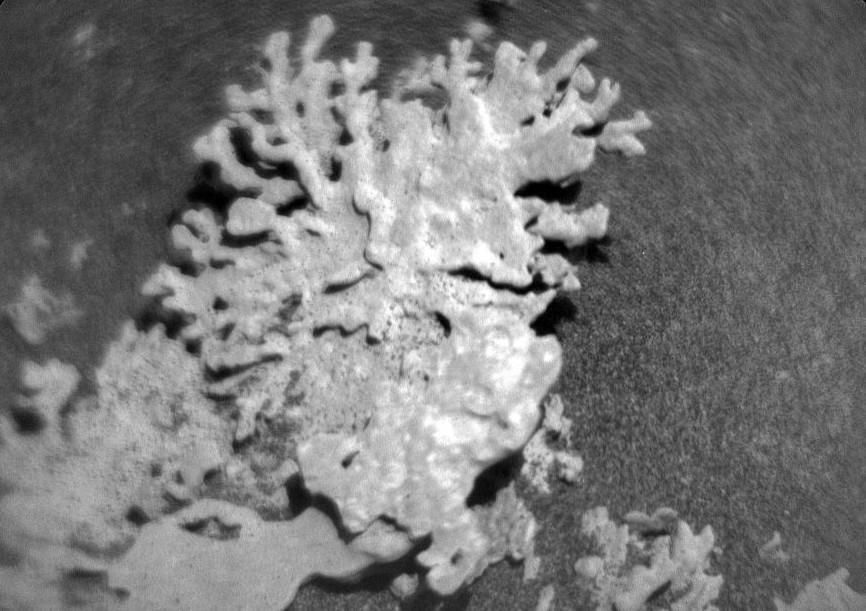
Coral-shaped rock spotted on Mars, NASA shares pic
NASA’s Curiosity Mars rover has recently sent back some fascinating images of the Martian surface, and one of the most intriguing sights is a rock that bears a striking resemblance to a piece of coral. The rock, which is estimated to be over a billion years old, was discovered in the Gale Crater, a massive impact basin on the Martian surface.
The image, captured by the rover’s ChemCam instrument, is a black and white photograph that shows a intricate pattern of grooves and ridges on the surface of the rock. While it may not look like much at first glance, a closer inspection reveals a shape that is eerily reminiscent of coral, with its delicate tendrils and intricate patterns.
The discovery of this coral-like rock is a significant one for NASA scientists, as it provides further evidence of the complex geological history of Mars. The Gale Crater, where the rock was found, is a vast impact basin that is believed to have formed around 3.5 billion years ago, during a period of intense asteroid impacts on the planet.
The Curiosity rover, which has been exploring the Martian surface since 2012, has sent back countless images of rocks and soil from the red planet. However, this particular image of the coral-like rock stands out from the rest due to its striking similarity to a living organism.
So, what is this rock, and how did it come to resemble coral? According to NASA scientists, the rock is likely the result of a combination of geological processes that have been shaping the Martian surface for billions of years.
One possibility is that the rock is a type of sedimentary rock, formed from the accumulation of minerals and other particles over time. The intricate patterns and grooves on the surface of the rock could be the result of erosion and weathering, which have shaped the rock over millions of years.
Another possibility is that the rock is a type of igneous rock, formed from the cooling and solidification of magma deep within the Martian crust. The coral-like shape could be the result of the rock’s unique chemical composition, which has created a pattern of growth and decay over time.
Regardless of its exact composition, the coral-like rock is a fascinating discovery that provides a glimpse into the complex geological history of Mars. The Curiosity rover has been exploring the Martian surface for years, and its discoveries have shed new light on the planet’s ancient past.
The rover’s mission is to explore the Martian surface and search for signs of past or present life on the planet. While the discovery of a coral-like rock may not be a direct indication of life on Mars, it does provide further evidence of the planet’s complex geological history and its potential for supporting life.
As NASA continues to explore the Martian surface, we can expect to see even more fascinating discoveries like this coral-like rock. The Curiosity rover is just one of several NASA missions that are currently exploring the red planet, and its discoveries will continue to shed new light on the mysteries of Mars.
Source: https://www.jpl.nasa.gov/images/pia26634-curiositys-chemcam-views-a-rock-shaped-like-coral/






